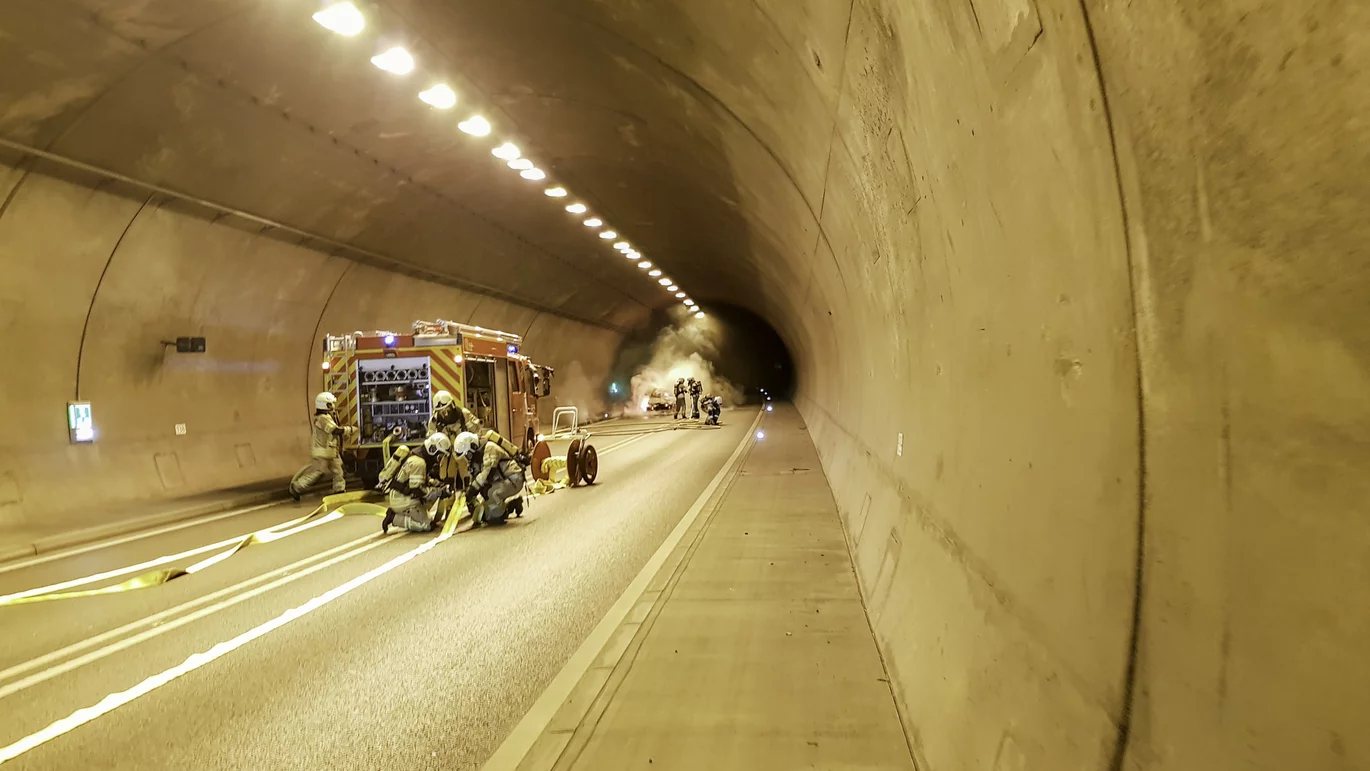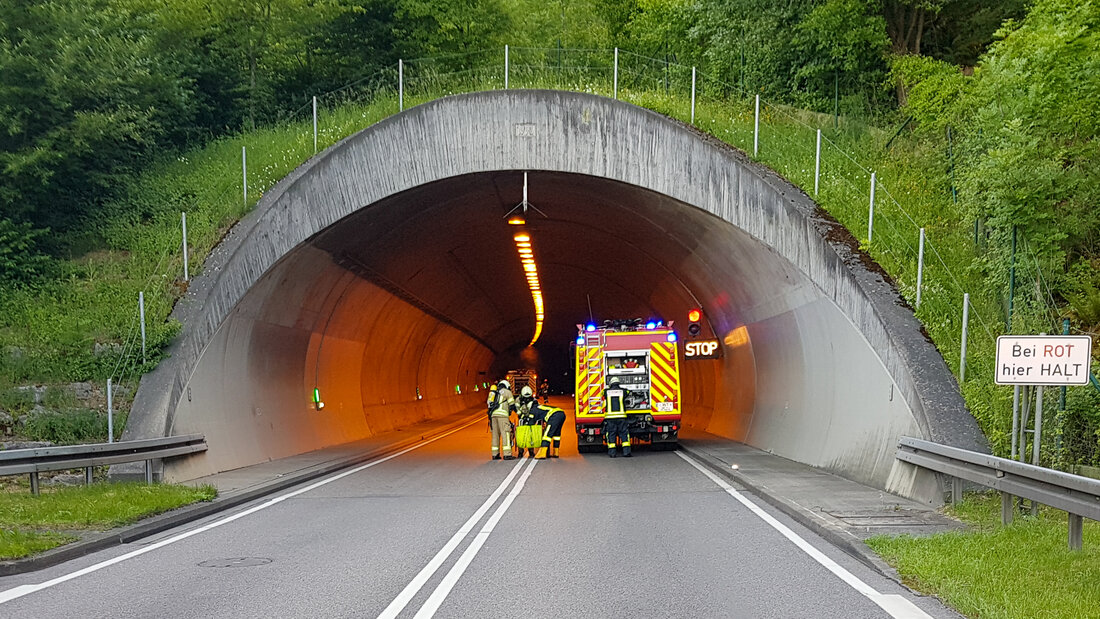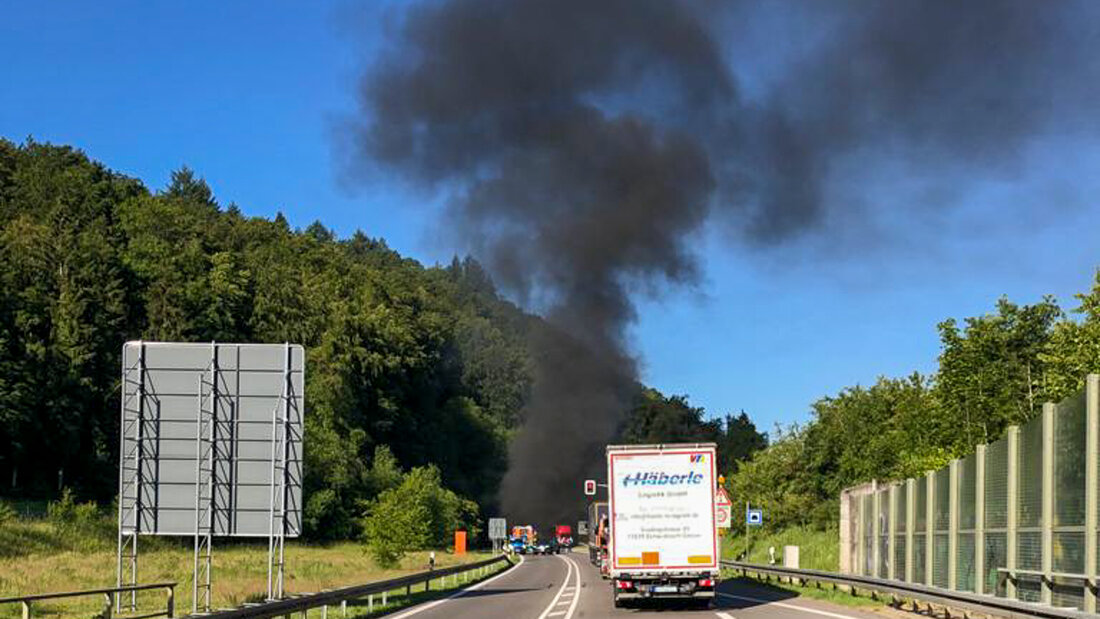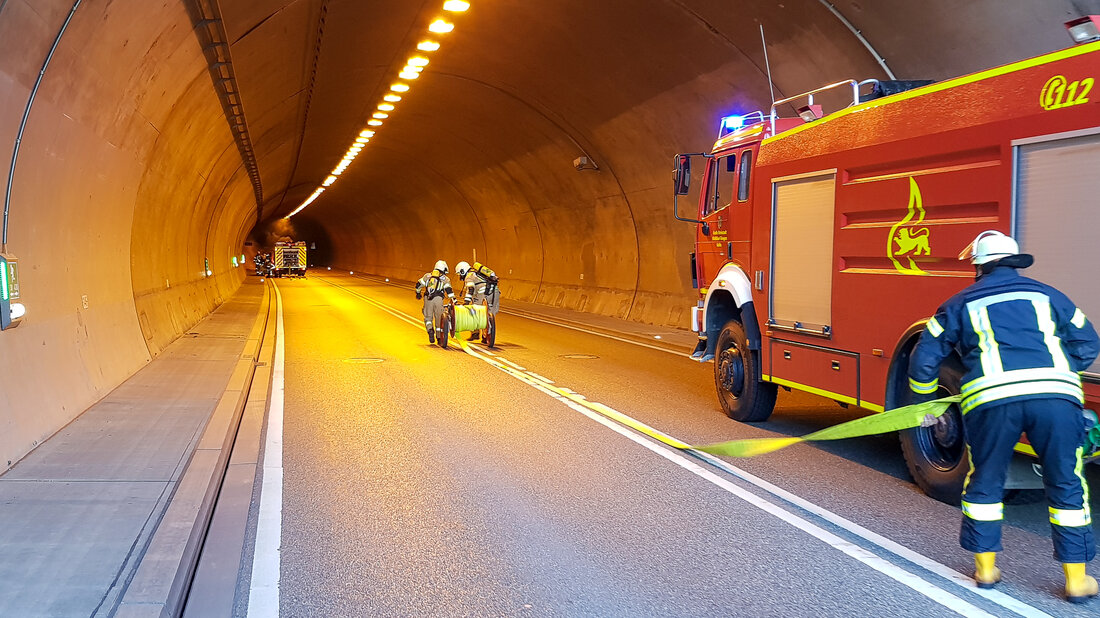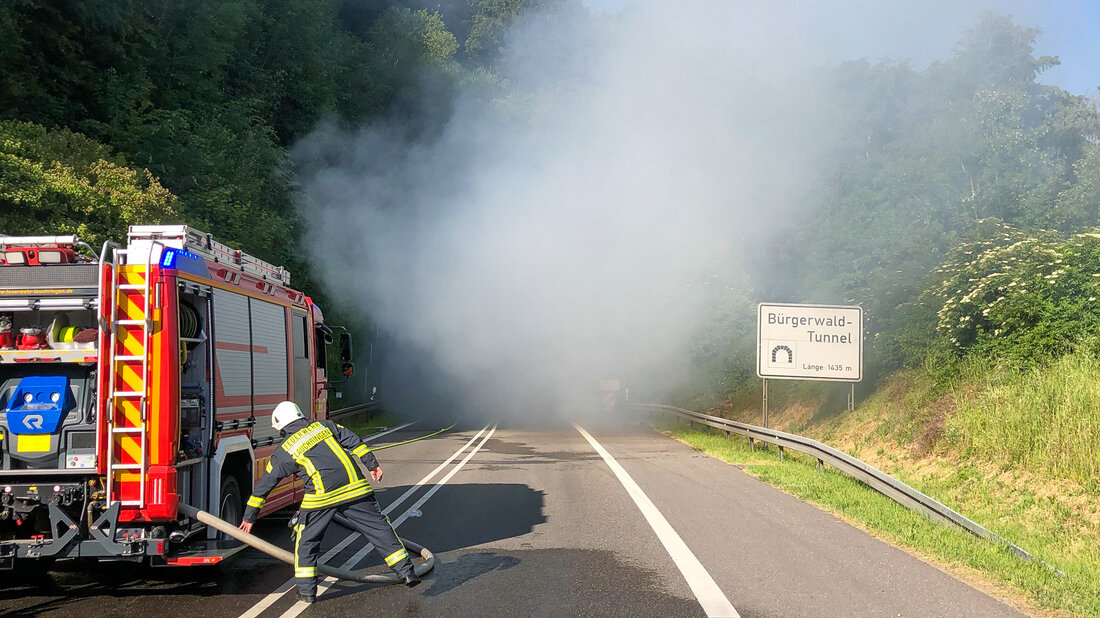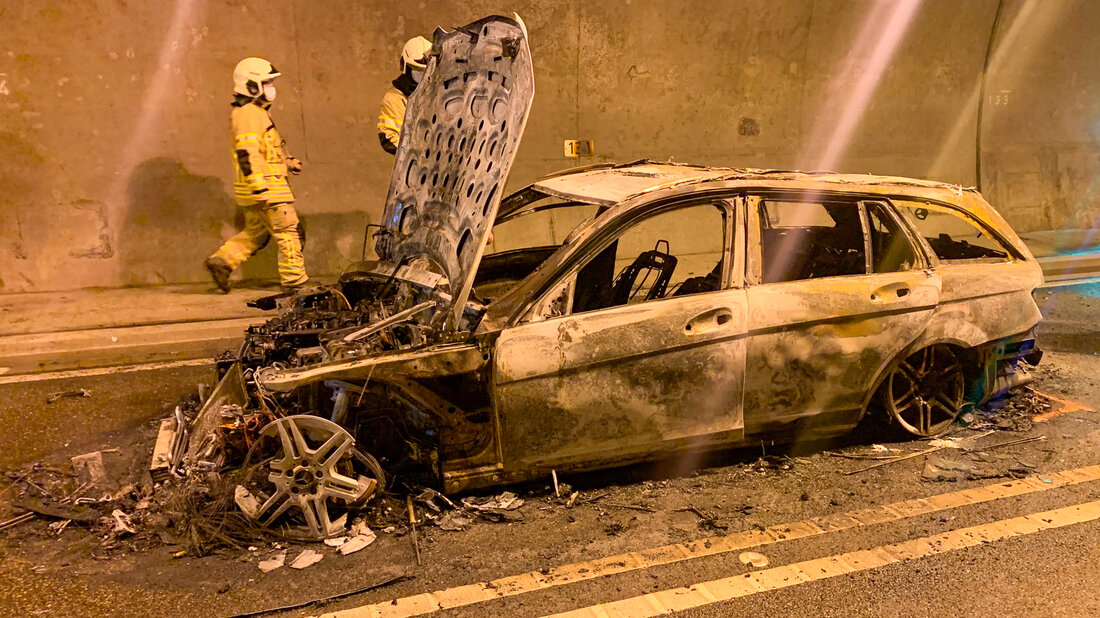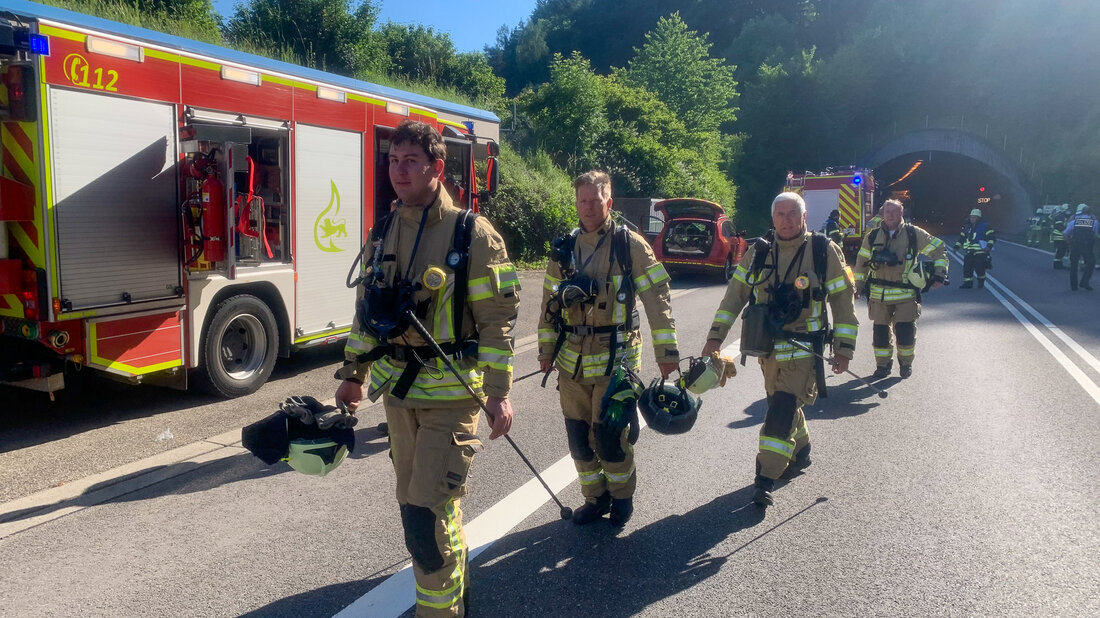On 2 June 2020, a car burned down in the Bürgerwald Tunnel near Waldshut-Tiengen (D). Eleven people suffered smoke inhalation injuries. We spoke with fire chief Peter Wolf about the most important findings from this firefighting operation.
The fire incident
On 2 June 2020, a female motorist drove into the Bürgerwald Tunnel in the direction of Waldshut-Tiengen at around 8:20 a.m. Shortly before reaching the west portal, she noticed the smell of fire and saw flames. She brought her car to a stop in the tunnel 134 meters from the portal exit. Eighteen vehicles were jammed behind her vehicle, which after a short time were completely engulfed in smoke. The first emergency calls were received by the control centre before the alarm of the fire alarm system. The graphic below shows the situation when the Waldshut-Tiengen Fire Service arrived.
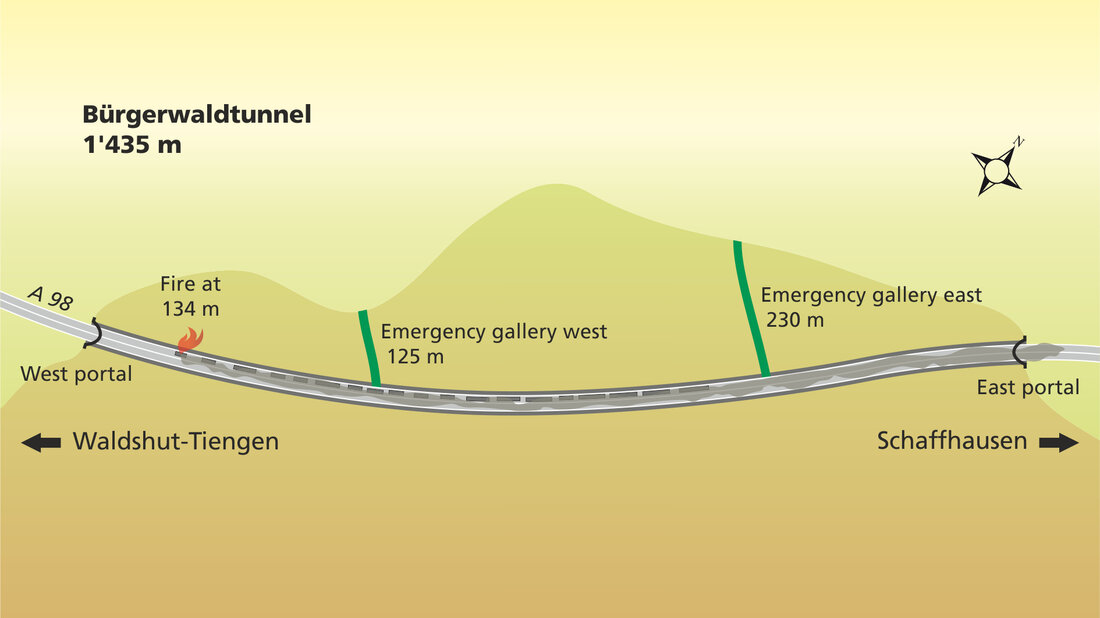
From the west portal, the firefighters had a practically unobstructed view of the scene of the fire. Thick black smoke escaped from the east portal. Peter Wolf: «So we had a well-developed upstream side. On the downstream side, however, the smoke filled the entire tunnel profile and practically exited horizontally from the east portal. It only rose after about 50 m into the air.» The pictures below show the location at the portals.


